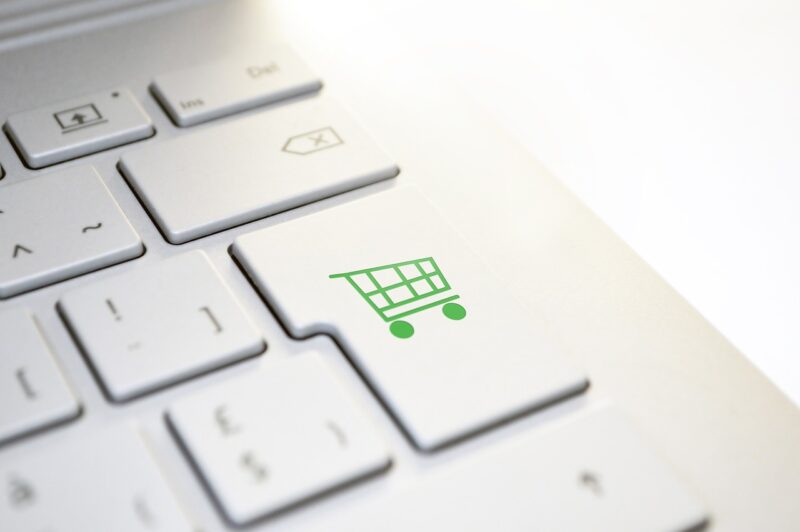
In the past two decades, e-commerce has evolved from a novel concept to a dominant force in the global retail landscape. With the rise of the internet and mobile technology, consumers have shifted their shopping behavior, significantly impacting traditional retail stores. This article delves deep into the revolutionary changes driven by e-commerce in the retail sector, examining its influence on consumer behavior, operational efficiencies, and the future of brick-and-mortar stores.
1. Understanding E-Commerce and Its Growth
E-commerce refers to the buying and selling of goods and services over the internet. It encompasses a wide range of business models, including business-to-consumer (B2C), business-to-business (B2B), consumer-to-consumer (C2C), and more. The e-commerce industry has witnessed remarkable growth over the years:
- Global e-commerce sales: In 2023, global e-commerce sales reached approximately $5.7 trillion and are projected to grow by over 50% in the next few years.
- Increased online shopper demographics: More people of all ages, from millennials to seniors, are shopping online, opening new markets for retailers.
- Technological advancements: The advent of mobile phones, secure payment systems, and social media platforms has propelled online shopping as a convenient choice for consumers.
E-commerce has forever altered how consumers interact with brands, necessitating that traditional retailers adapt or risk obsolescence.
2. Changing Consumer Behavior
The impact of e-commerce on consumer behavior is profound and multifaceted. Here are some key changes that have been observed:
- Convenience: Consumers now prioritize convenience over everything else. E-commerce allows them to shop from the comfort of their homes, save time, and avoid long queues at stores.
- Wider product selection: Online shopping provides access to a seemingly endless array of products from all over the world. This has led consumers to expect availability and variety at their fingertips.
- Price comparison: Consumers can easily compare prices across different platforms, which has increased competition among retailers and forced traditional stores to adopt more competitive pricing strategies.
- Personalization: E-commerce platforms leverage data analytics to provide personalized shopping experiences, such as targeted advertisements and product recommendations, enhancing customer satisfaction.
- Informed decision making: With access to reviews, ratings, and product information, consumers are more empowered to make educated choices about their purchases, minimizing buyer’s remorse.
These changes compel traditional retailers to rethink their customer engagement strategies, as they now compete with not only other players in their market but also with optimized online experiences.
3. Reconfiguring Retail Operations
In response to the growth of e-commerce, traditional retailers have had to undergo significant operational transformations:
- Omni-channel retailing: Many retailers are adopting an omni-channel approach, where they create a seamless shopping experience across physical and digital platforms. This includes buy online, pick up in-store (BOPIS) options and integrating inventory systems to serve customers better.
- Enhanced customer experience: Traditional stores are increasingly focusing on offering exceptional customer experience through personalized service, experiential retail, and interactive technology, competing with the ease of online shopping.
- Inventory management innovations: With the rise of e-commerce, retailers are employing advanced analytics and AI-driven solutions to manage inventory more efficiently, reducing excess stock while ensuring product availability.
- Logistics optimization: Efficient logistics have become paramount to provide prompt deliveries. Traditional retailers are investing in supply chain enhancements, including partnerships with logistics companies and implementing smart technologies to streamline operations.
These transformations require significant investment and a willingness to embrace change among traditional retailers, shaping the future of both online and offline shopping experiences.
4. The Disruption of Brick-and-Mortar Stores
While e-commerce has opened new avenues for retailers, it has also led to the decline of many traditional brick-and-mortar stores. A few impacts include:
- Store closures: In recent years, numerous well-known retailers have filed for bankruptcy or closed stores due to the inability to compete with the e-commerce movement. Consequently, these closures have transformed shopping districts and disrupted local economies.
- Changing real estate dynamics: As demand for retail space decreases, property values in traditional shopping areas have plummeted, forcing landlords to rethink their strategies, including converting retail spaces into logistics centers or mixed-use developments.
- Experience-driven formats: Many surviving retailers are shifting away from conventional formats, opting for experiential retail concepts that focus on creating memorable experiences for consumers rather than purely transactional interactions.
These challenges underline the necessity for traditional retailers to evolve alongside the rapid growth of e-commerce, leveraging their strengths to offer unique value to their customers.
5. The Future of Retail: A Hybrid Landscape
Looking ahead, the retail landscape is set to evolve further as e-commerce continues to grow. A few predictions for the future include:
- Integration of AI and AR: Artificial intelligence and augmented reality technologies will increasingly enhance the customer experience, providing personalized recommendations, virtual try-ons, and immersive shopping experiences.
- Sustainability as a priority: Given the growing emphasis on sustainability among consumers, retailers will likely adopt more eco-friendly practices, focusing on reducing waste and promoting sustainable sourcing.
- Continued growth of social commerce: Social media platforms will play a more significant role in retail, allowing consumers to make purchases directly through channels like Instagram and TikTok, further blurring the lines between entertainment and shopping.
- Greater emphasis on data security: As e-commerce grows, concerns regarding data privacy and security will drive retailers to adopt stricter measures to protect customer information.
As we navigate an increasingly digitalized world, both e-commerce and traditional retail will coexist, influencing and shaping each other for years to come.
Conclusion
The revolutionary impact of e-commerce on traditional retail is undeniable. From altering consumer behavior to reconfiguring retail operations, e-commerce continues to transform the retail landscape. Traditional retailers must adapt to the realities of an evolving market and embrace new strategies to thrive alongside their digital counterparts. As we move forward, the future will be characterized by innovation, integration, and a unique blend of online and offline experiences that cater to the diverse preferences of consumers worldwide.






